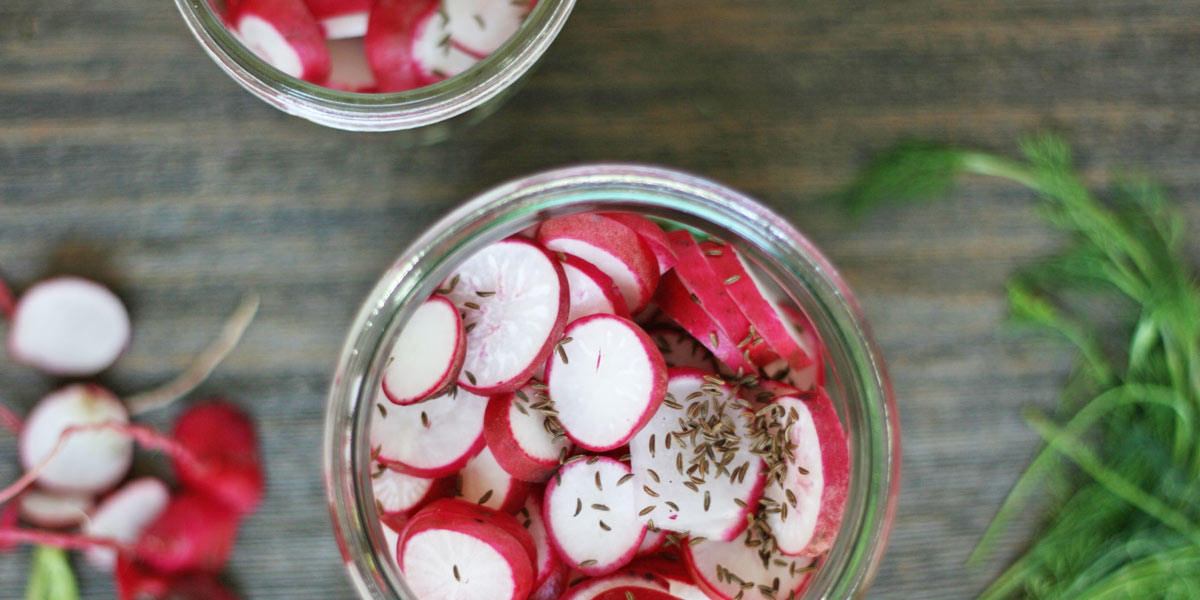Lacto Fermented Summer Radishes
in Recipes
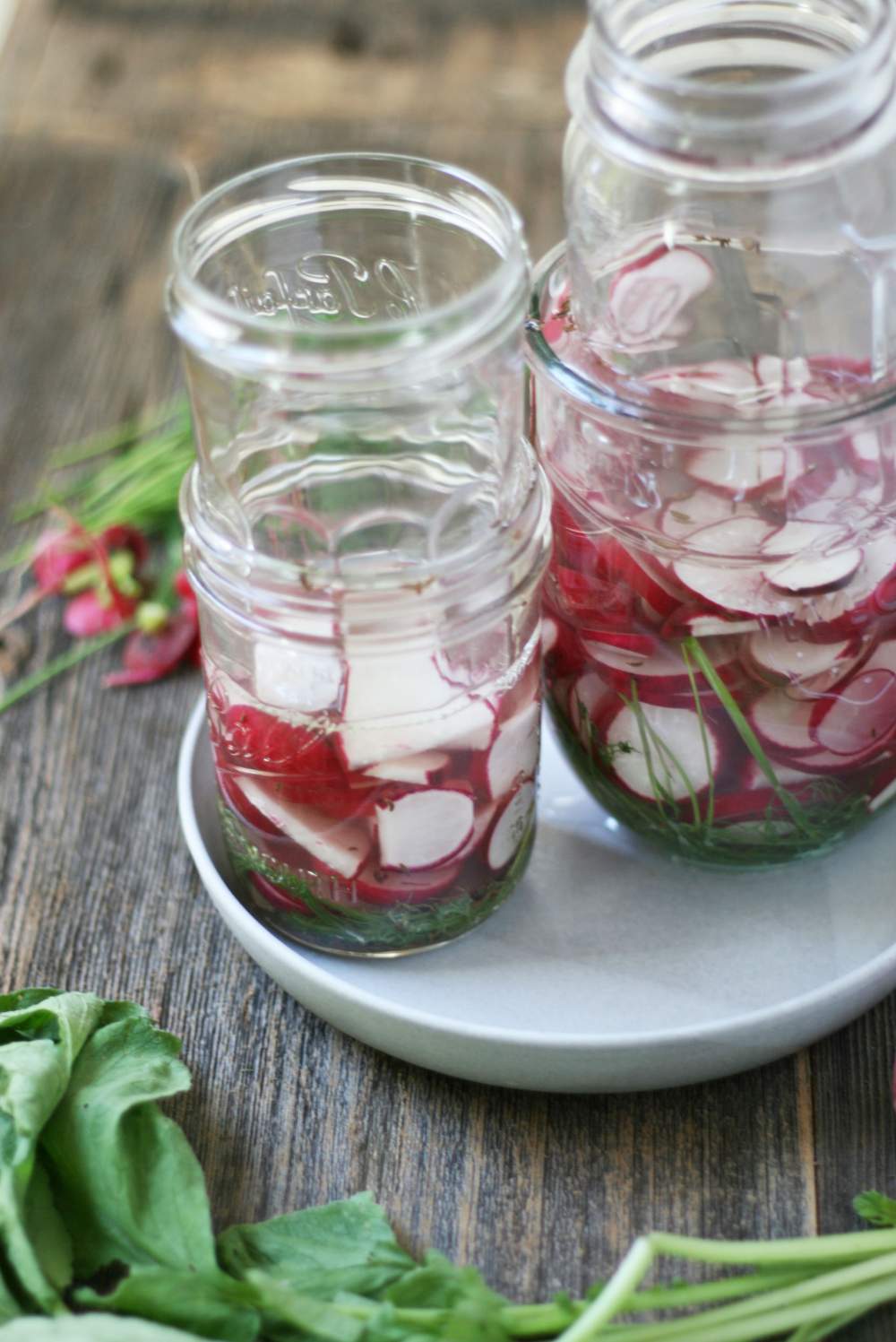
It’s time to get cultured with bacteria. Get it?
Whether you may be cultured on fermented foods already, here’s a friendly reminder to eat your fermented foods! Fermented foods are not delicious and tangy, but they’re also incredibly beneficial to our gut health.
Flourish With Flora.
Let’s talk gastrointestinal system, specifically the gut. Your gut is home to trillions of microbes: tiny little bacteria that essentially eat what you eat. Those bacteria (3 to 4 pounds of them!) are our little friends, and incredibly important in maintaining a proper digestive system, healthy immune system, and overall properly functioning body. In fact, imbalances in the gut may lead to serious and significant side effects all over the body. Anything from constant headaches, anxiety, allergies, low energy, skin issues, and cardiovascular disease may all stem from out of whack gut bacteria.
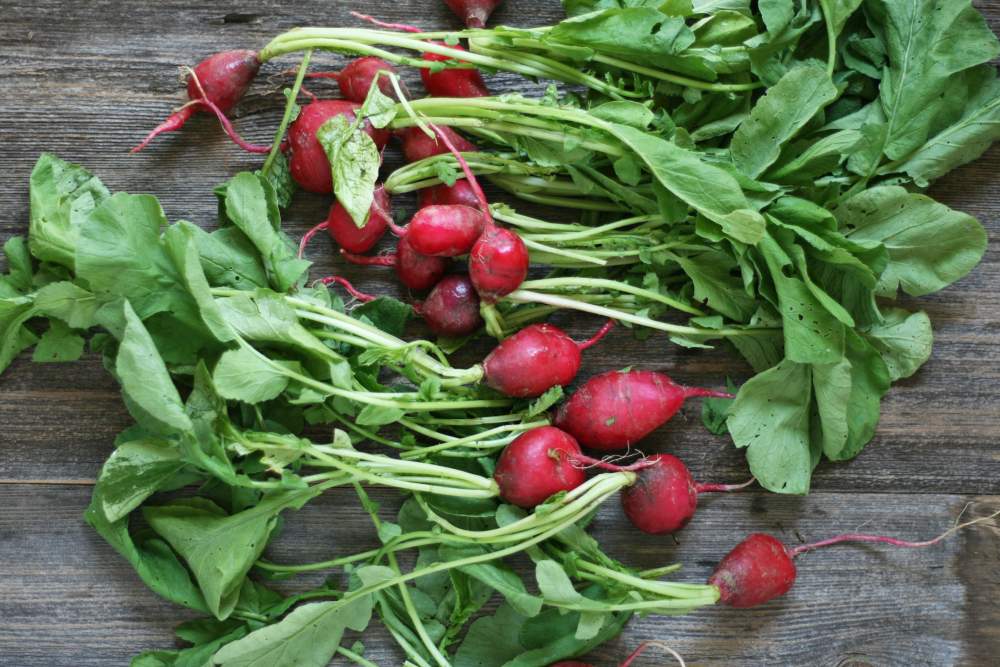
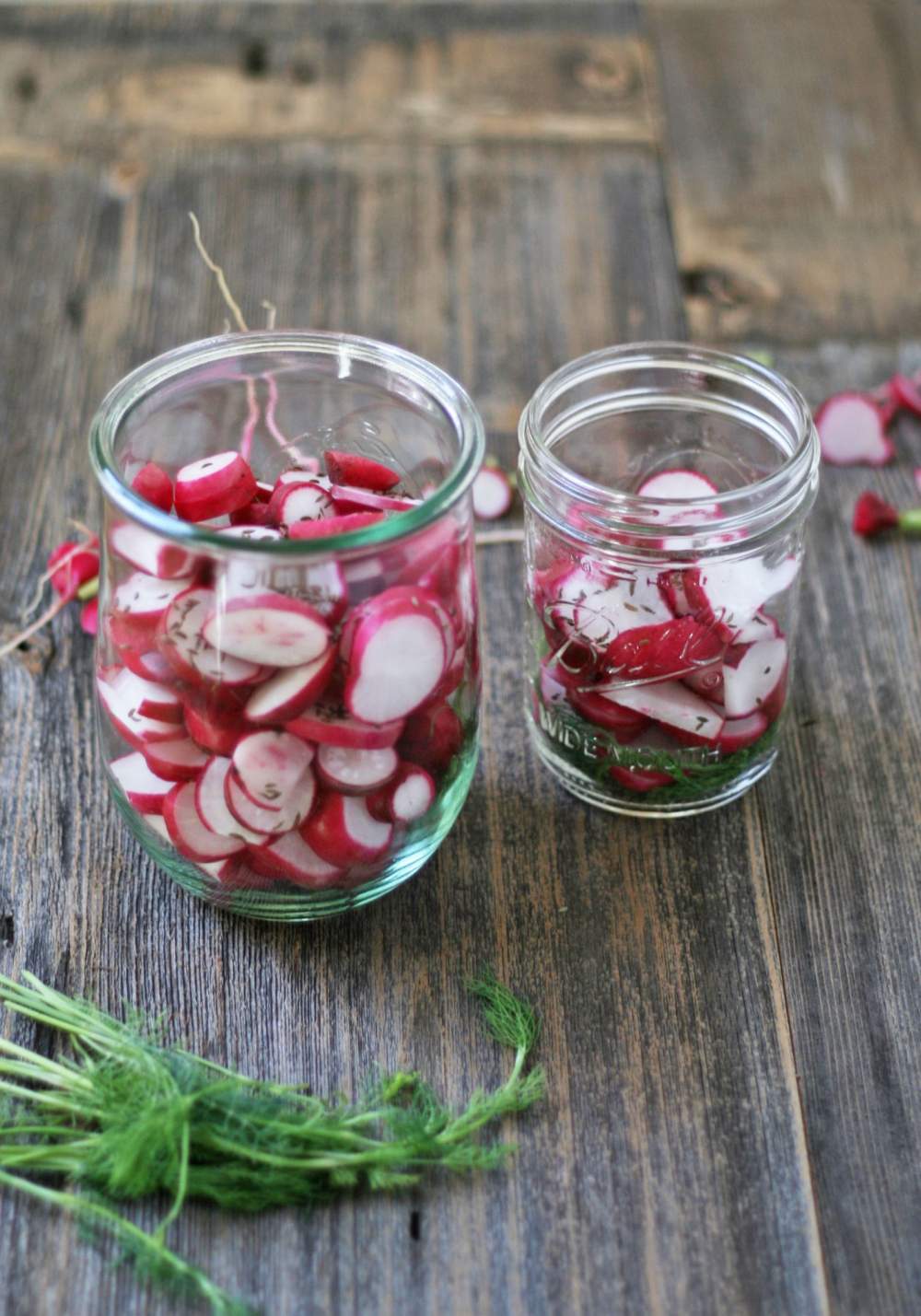
Those little bacteria, our flora, are mostly concentrated in the colon where they accomplish a huge number of important jobs. Notably, they crowd out bad bacteria, help digest food particles that we cannot, create biotin, Vitamin K, and short chain fatty acids, aid the immune system, and hold metabolic functions. In short, we need them and they need us. So how do we keep our flora happy and functioning at their best?
Eat your fermented foods! Fermented foods such as kombucha, kefir, kimchi, sauerkraut, and these delectable radishes all contain live microorganisms that up the count of our healthy bacteria and support our gut’s health. Fermented foods not only have increased digestibility thanks to microbacteria that can break down specific enzymes, but they also increase nutrient levels like calcium, B Vitamins, and GABA – a neurotransmitter associated with relaxation.
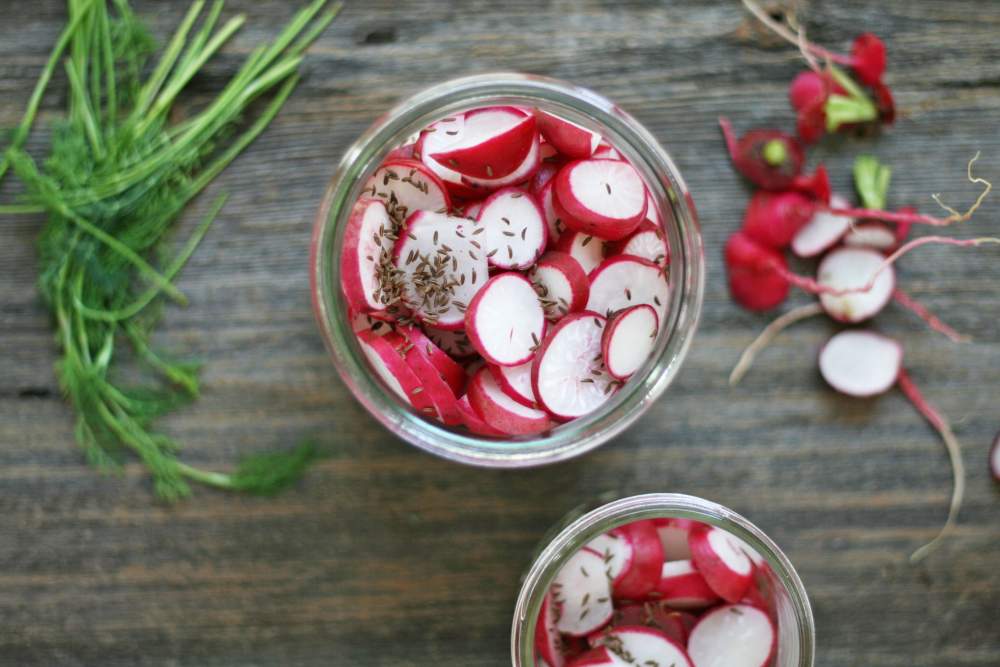
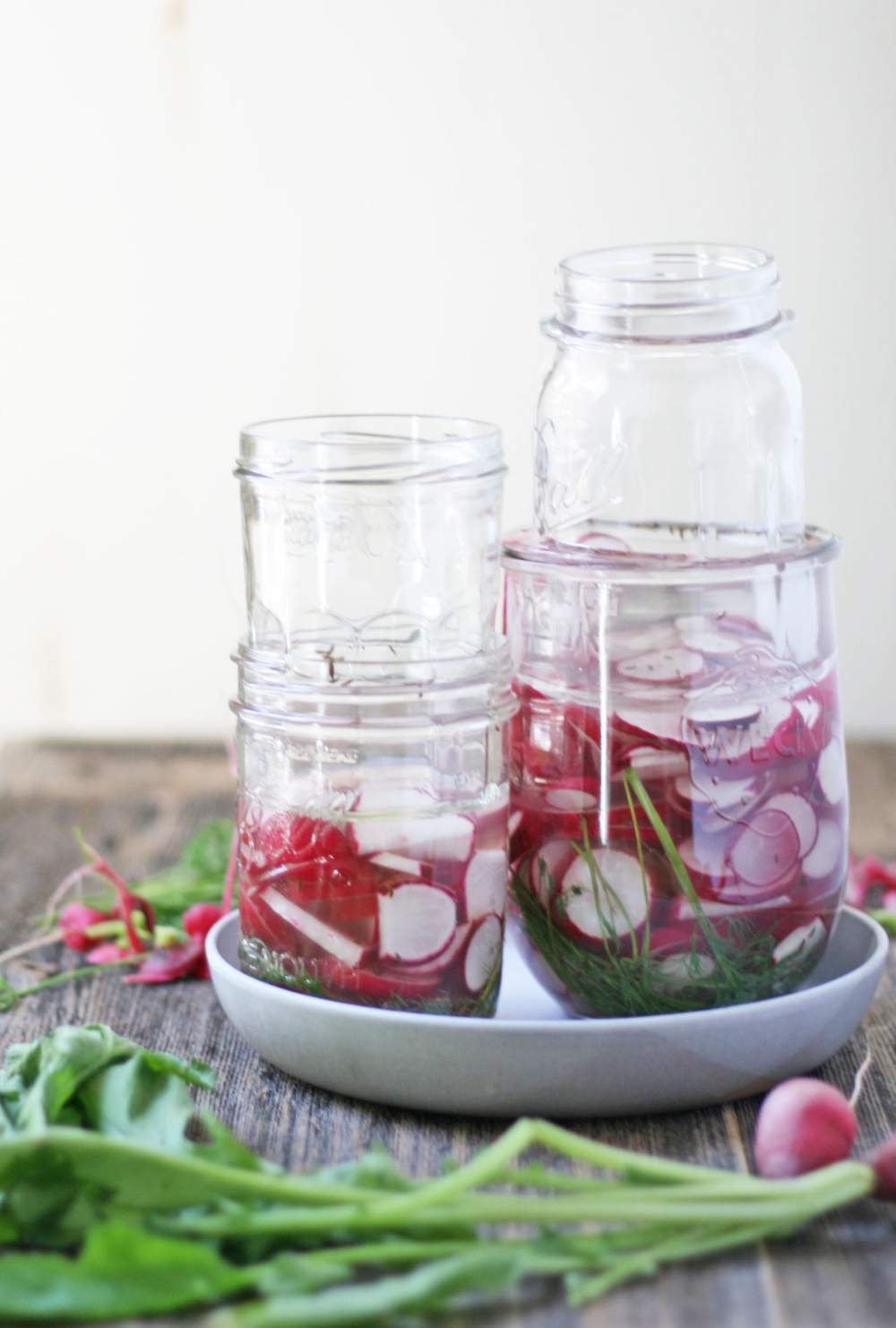
So, how do you ferment? Lacto-fermentation uses a simple brine of salt and water to preserve goodies. That’s it. Although you can also use whey, I prefer to use salt and water for a cheaper, dairy-free, and easier option. In the process, the bacteria lactobacillus naturally converts glucose to lactose, which in turn preserves the food. This method of preservation has been used for thousands of years across all cultures as a way to preserve garden bounty and promote health. In fact, your very own ancestors (and their ancestors) probably fermented all sorts of things! It wasn’t until the industrial revolution when the vast majority of Westerners stopped growing and preserving their own things, and turned instead to processed and packaged conveniences that fermented foods went by the wayside. I’ll admit it, fermented radishes aren’t as convenient in time saving abilities as a frozen pizza, but they are an amazing way to use summer produce in an economical way and help your gastrointestinal system flourish.
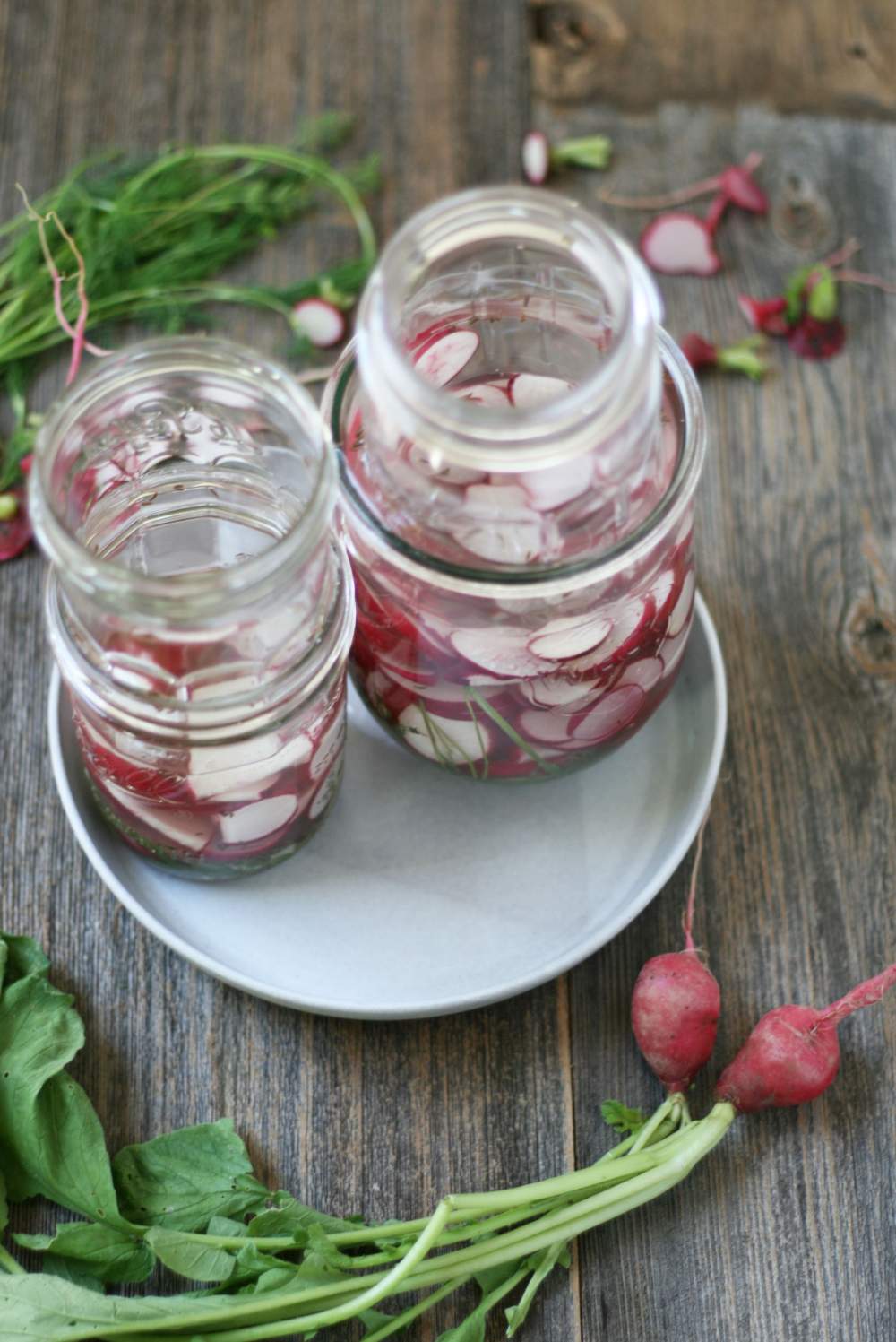
These fermented radishes are absolutely delicious on their own or work well in a salad, as a garnish, with scrambled eggs, on a sandwich, or on a delicious appetizer spread. I hope you enjoy making and eating them as much as I do!
Summer fresh bunches of radishes + simple salt-water brine + bacteriaaaa = gut loving, glowing, radiant, body nourishing health food.
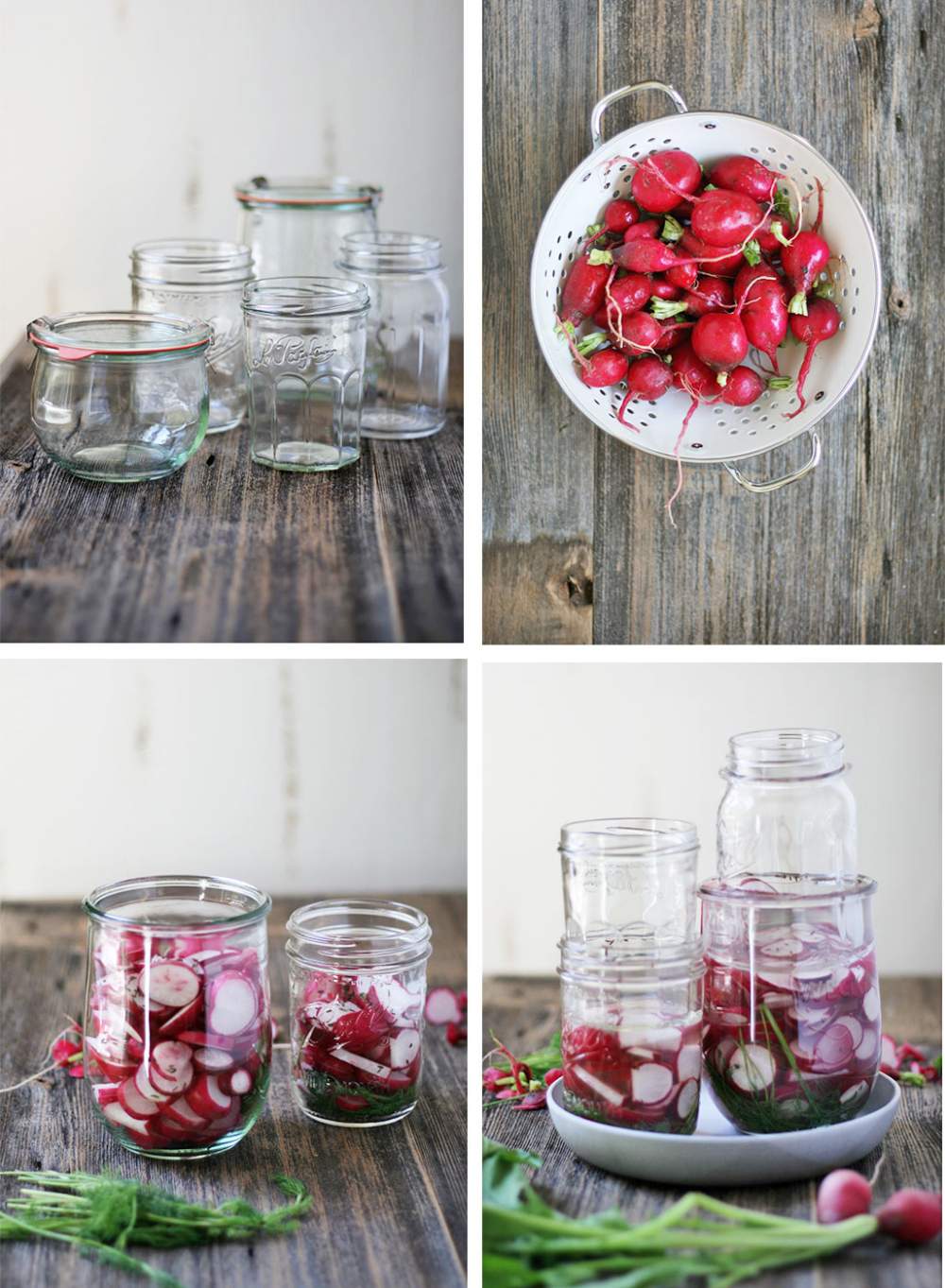
Lacto-Fermented Summer Radishes
Makes a quart and then some
3 cups filtered water
2-½ tablespoons sea salt
2-3 bunches of fresh radishes, or enough to fill a jar or two
Bunch of fresh dill
½ teaspoon caraway seeds
Method:
First things first, sanitize your jars (including the jar weights or fermenting weights). I prefer this method, though you could also boil them or steam them. Note: if you do use Jamie Oliver’s method, convert 180 Celsius to 350 degrees Fahrenheit!
Gently warm filtered water and stir in sea salt. Stir well to dissolve.
Wash, scrub, and slice off heads and greens of radishes. (Set greens aside, and use them for a salad or smoothie later!)
Slice radishes thinly and fill – nearly to the top – a sterilized jar with radishes along with fresh dill and caraway seeds. Pour salted water overtop of radishes, leaving about 2 inches of space from the tops of radishes. Place jars on a small plate or narrow bowl to catch brine overflow, and then place a ferment-weight or small jar inside the radish jar to fully submerge radishes underneath the brine. This is important: no radish can be left floating and exposed to air – it will quickly mold. It’s OK if there is air exposed when you place your small jar inside the large one; this is actually helpful to the fermentation process as it lets the carbonation escape. Just make sure that all the radishes are underneath the weight. Make sure to leave your jars settled on a plate or bowl to catch brine overflow – which will happen!
Allow jars to sit at room temperature and do their thang for about 5-7 days. It is essential to check your radishes after a few days by giving them a little taste. If they seem a bit sour and delicious, then they’re ready! Cover with an airtight lid and store in the refrigerator where they’ll keep for about 4 months.
Fermentation Tips & Tricks:
-Please use organic radishes. You don’t want any nasty pesticides throwing off the fermentation process.
-These photos were taken before the radishes finished fermenting. The water will normally become a bit cloudy and quite pink during the process. Also, white sediment at the bottom indicates the presence of yeast – which is normal!
-Do not forget to sanitize your jars – all of them! Any lingering bacteria within the jars can throw off and ruin the whole bacteria-loving process.
-Your climate will affect the fermentation process! A nice warm kitchen will shorten fermentation time, while cooler temperatures usually make the fermentation time a bit longer. Taste test accordingly.
-If you see a little something start to grow on top of the brine – don’t sweat it. Just scoop it off and discard. If the substance is mold (colored green, black, red, or pink), use caution. The substance can be scooped off and discarded, but give your veggies a taste and smell test. If they’re off, throw away the batch and sanitize your jar. White and flat film on top is simply yeast and completely normal – you can scoop this off too.
-Fermenting is a lesson in experimentation and patience. Don’t sweat any mishaps – they’re easy to fix, and your radishes will stay taste delish.
-DO NOT seal your radishes in an airtight jar to start out the fermentation process. The carbonation will make the jar explode. Seriously. This is why we leave our jars open – with a weight on top – to promote bacterial growth and goodness.
-Do you need to add in a probiotic capsule? No – vegetables naturally contain the bacteria needed to get the fermenting process going.
-You can ferment any sort of vegetable – and fruit too! Some of my other favorites are pickles and beets!
